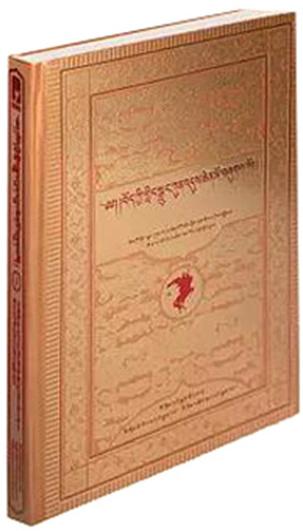
. > WHAT'S NEW > BOOKS
A 300-volume collection of ‘Epic of King Gesar’
Author : NORBU WANGDAN Source : Chinese Social Sciences Today 2021-09-13

A Great Collection of Epic of King Gesar
Due to Epic of King Gesar’s long history, wide range of inheritance, and huge volumes, its previous collection and compilation was limited to only a part of an area or a period of time, lacking a comprehensive, systematic, and complete compilation.
The release of the 300-volume A Great Collection of Epic of King Gesar represents the most comprehensive collection in the Tibetan language to date, which is a great achievement China has made in the field of protecting and inheriting traditional ethnic culture.
In terms of text types, the collection includes oral, semi-oral, and oral-originated texts; various manuscripts, stereotype editions, woodblock books, and fascicules in the traditional Tibetan sense; and newly recorded editions. Regarding its geographic scope, it covers the epic’s all “core spreading areas” on the Qinghai-Tibet Plateau. As for content, it takes on the basic appearance as an “encyclopedia” of ethnic culture. The biggest highlight is the collection of various oral narrations by outstanding folk artists, showing the richness and active state of the epic.
The so-called “living epic” is an ecosystem composed of three important elements: artists, texts, and contexts. Its prosperity or decline is greatly related to their internal structural interaction, and the absence of any party will cause the end of the living epic. Presently, the three elements are still well-preserved, in effective interaction, and ecologically related. As such, the epic is still in a living state. In this structural system, voluminous texts are the core and foundation of the epic, providing reference for measuring and grasping the intrinsic value of the epic.
Regarding the volume of the epic, academic circles generally describe it as “more than one million poetry lines, more than 20 million characters, and more than 170 texts.” However, this has been completely rewritten with the publication of this set of books, which contain 104 manuscripts including ancient or rare editions and 196 recent performance texts. In a total of 300 volumes, the collection has more than 20 million poetry lines, with 34 related texts attached. As the most complete Tibetan library of the epic so far, the collection basically unfolds its complete picture, exemplifying the CPC and the government carrying forward the fine traditional Chinese culture.
Norbu Wangdan is a research fellow from the Institute of Ethnic Literature at the Chinese Academy of Social Sciences.
Ye Shengtao made Chinese fairy tales from a wilderness
Ye Shengtao (1894–1988) created the first collection of fairy tales in the history of Chinese children’s literature...
-
How northern ethnicities integrated into Chinese nation
2023-09-18
-
Mogao caves
2023-09-12
-
Mogao Grottoes as ‘a place of pilgrimage’
2023-09-12
-
Time-honored architectural traditions in China
2023-08-29
-
Disentangling the civilizational evolution of China
2023-08-28
-
AI ethics in science fiction
2023-08-23













 2011-2013 by www.cssn.cn. All Rights Reserved
2011-2013 by www.cssn.cn. All Rights Reserved